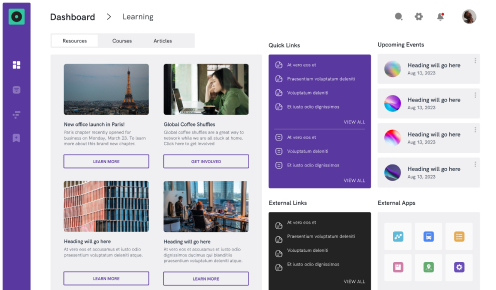How to use RPA effectively?
 By Swarnali Adhya
By Swarnali Adhya
 1st February, 2022
1st February, 2022
Scalability in RPA
RPA Use Cases
RPA Integration Tips
RPA Success Factors
Robotic process automation or RPA has the power and capability to help organizations increase their output and accelerate their digital transformation agenda. The true benefit of RPA rests on the technology’s ability to increase efficiency while reducing costs. There is no surprise that RPA is gaining traction in the market by taking away repetitive manual tasks from the human workforce and freeing them to focus on more critical strategic functions.
6 steps to use RPA in an effective way
1. Identify the process
The first thing is to carry out a thorough assessment of all the operations, within and across various departments, so that you can determine which processes can prove to be good candidates for automation.
2. Manage expectations:
Implementation of RPA is all about managing the people and their expectations. Employees must be informed about the need for automation, its essentiality, and how it is likely to influence the return on investment (ROI). The most important areas in which you need to manage expectations are:
- Implementation time
- Implementation cost
- Cost savings
- Benefits of analytics
3. Choose the right tool
Another vital task is to have a crystal-clear set of objectives that your company aims towards. There you can follow two criteria. First, you can consider vendor-related criteria, such as their experience or their orientation to future-proof automation solutions.
Another way, you can try to match the RPA software features, like security and screen scraping capabilities, ease of implementation, the total cost of ownership, etc., to your company’s hierarchy of goals and needs.
4. Assessment of ROI
A fine-grained analysis is required for analysis of the feasibility required before successful RPA implementation. It is important for every organization to compare investment against return, and to decide based on this to what extent it is profitable to invest in RPA.
5. Involve your IT team
The members of your IT team can provide critical insight as you choose an RPA tool that meets your business objectives. Their expertise will also be valuable whenever unexpected issues or malfunctions occur. Training for other employees will be also easy with their support.
6. Measuring the performance
Finally, formulate key performance indicators (KPIs) based on which you can find out the success rate of your RPA implementation.
Inovar blends diligence with skill
Inovar delivers state-of-the-art smart solutions by blending diligence with skills. We adhere to the aforementioned steps and identify what processes/functions need to be automated.
Considering the massive importance and benefits of RPA solutions in reducing efforts, improving customer service, and increasing profits, proper implementation becomes pivotal to ensure that every step is duly scrutinized, vetted, and backed.






























